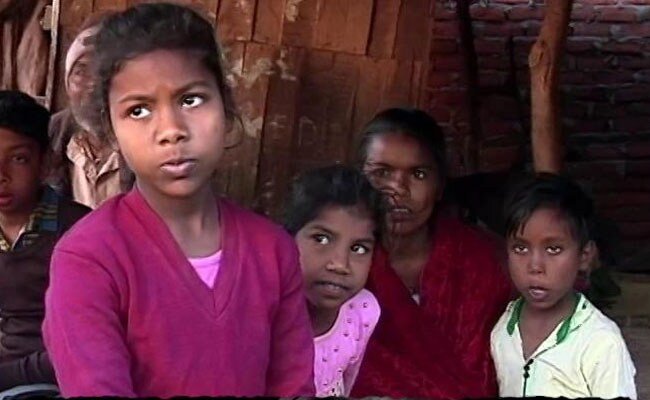Emerging Meals Inflation Makes Rural India Flip To Rotis, Watery Dal
Youngsters are one of the most worst suffering from the present scenario in rural India.
New Delhi:
Nazir, 70-year-old farmer from Naya Khera village in Hardoi district of Uttar Pradesh, has cooked a meal of watered-down dal and rotis for dinner. “To make the dal tighter, I can want extra dal. When we now have much less cash, the dal may also be much less,” he says.
Nazir is one of the in India who’re feeling the chew of emerging starvation, emerging meals costs and falling earning.
A NITI Aayog record from December 2019, confirmed that India’s efficiency on making sure 0 starvation had fallen through 13 issues in a yr since 2018. The pointy building up in meals inflation — it has now hit a six-year-high at 14.12% — seems to have exacerbated the starvation downside within the nation.
Greens have noticed the best inflation, over 60%, changing into one of the vital first issues to vanish from many kitchens in rural India. The typical per month retail value in Lucknow of onion grew from Rs 20 in December 2018 to Rs 95 in December 2019. Value of potatoes rose from Rs 16 to Rs 20 and the cost of tomatoes rose from Rs 18 to Rs 26 right through the similar duration.
For households like that of Ram Prakash, a landless farmer in Mujahidpur village of Hardoi district who earns about Rs 100-200 an afternoon, their hand-to-mouth life has been threatened additional through his potato plants being ruined this harvest season through unseasonal rains. The ladies of his circle of relatives say that they simply have wheat flour, rice and a few potatoes of their kitchen now. They are saying they have got no different greens round.
In a similar way, close to Malihamau in Hardoi, farmer and labourer Satinder Sharma says that meals inflation method they may be able to now best inventory wheat flour at house, and no different greens. “When we now have roti, we haven’t any salt. When we now have salt, we haven’t any greens,” he mentioned.
Maximum of the ones NDTV spoke to mention they obtain subsidised meals grains underneath the Public Distribution Gadget (PDS), which quantities to five kg of rice, wheat and coarse grains at Rs 1-Three charges in step with individual per thirty days. In truth, Uttar Pradesh is doing higher than the nationwide moderate in making sure that rural families are coated underneath the PDS, in step with a NITI Ayog record.
On the other hand, even this falls brief for the reason that costs of all different elements that make for a nutritious meal have additionally shot up.
Within the native marketplace at Hardoi district’s Bawan, vegetable and grocery distributors say individuals are purchasing much less. Vegetable supplier Shoukat Ali says that gross sales were reduce in part. Whilst he used to promote greens price about Rs 2,000-Four,000 in an afternoon, at the moment he sells items price best Rs 1,000-2,000, he says.
It’s not simply greens which have been hit. Moderate per month retail costs of moong dal in Lucknow rose from Rs 75 to Rs 89 between December 2018 and December 2019. Masoor dal rose through Rs 2 to Rs 62.
A grocery retailer shopkeeper, Vinod Kumar Shukla, mentioned that they have got began shopping much less pulses shares as a result of it’s not being offered anymore. “We used to inventory 30 kg of dal previous. Now we carry 15-20 kg for a month. We promote it 100-200 gm at a time now. No one buys in kilograms anymore,” he mentioned.
The issues brought about through the meals inflation are compounded through a stoop within the expansion of rural wages, which dropped from 6% in October 2016 to only Three% in October 2019.
Youngsters have additionally now not been spared through the pincers of starvation and emerging costs. Ram Chiraiya, Sharma’s spouse, says that they now feed their three-year-old daughter Rama best two times an afternoon. The foods consist principally of rotis.
“When we now have potatoes, we give her that. When we do not, we give her roti with chutney,” mentioned Chiraiya. Milk is not part of her daughter’s vitamin.
In Azmat Nagar village, Binay, an unemployed labourer, additionally feeds his five-year-old son, Sonu, a in a similar way frugal meal of rotis, potatoes and rice. “We will be able to’t consume thrice an afternoon. We’re deficient and issues are too pricey. We feed the kid additionally two times an afternoon. Once we consume, he eats,” he mentioned.
“After all our starvation is not glad. However who can we scream at? The place will I convey meals from? Starvation is not glad. However what are we able to do?” asks Ram Prakash.

